 Bloomberg Businessweek has assembled one of those link-bait "Best Blank to Blank in the U.S." lists ("America's Best, Affordable Places to Raise Kids"), which are like...not crack, what's something more credible...um...like bacon cheeseburgers to us, so here you are. As it turns out, the kid-friendliest di tutti citta in the state may be, for our local readers, a shocker.
Bloomberg Businessweek has assembled one of those link-bait "Best Blank to Blank in the U.S." lists ("America's Best, Affordable Places to Raise Kids"), which are like...not crack, what's something more credible...um...like bacon cheeseburgers to us, so here you are. As it turns out, the kid-friendliest di tutti citta in the state may be, for our local readers, a shocker.
The Best Place to Raise Your Kids in Washington state is...Pullman. Ready for the next jab? The runner-up is West Richland. Now, this may not be as remarkable a west-side shut-out as it appears, as to judge from the blurb, the key criteria were "bordering Idaho," "wheat fields," "geographic marvels," and "high WASL scores." Also, "Pullman is a seat of learning and home to Washington State University."
Obviously not every city can be home to WSU, and there's no arguing the wheat field gap with our eastern neighbors. Bloomberg didn't even mention the Giant Palouse earthworm, which we have absolutely no answer to, and which you have to know is like...oh god, not crack again...uh...well, it's like any giant weird creature to kids.
In all seriousness, Bloomberg says they wanted to focus on smaller towns and cities, and not large, urban areas. I suppose that's nice and Norman Rockwell, but really? It seems a substantial assumption that kids are better off getting run over by a wheat combine than the express bus to downtown. Have you ever looked at the kinds of accidents farm kids are prone to? It's gruesome, and nearly always involves losing an arm to a machine. Still, it's a gut-check to realize that Eastern Washington still came out in front on the following:...
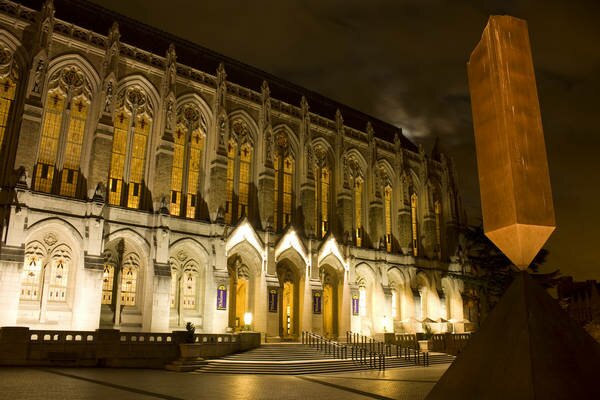 Our Flickr pool's Great Beyond gives us "Broken Obelisk at night"
Our Flickr pool's Great Beyond gives us "Broken Obelisk at night"
The cuts have already come down.
Now they come down again, but this time with more shock, more force, more impact. Straight from Olympia. Tens of millions will be lost in this saga. But the tens of millions tally up to something more profound than cash: the loss of minds. Young minds who want to learn. Wise minds who want to teach.
Our minds, if we let this happen as a region.
The University of Washington, like every kindergarten, elementary, junior and high school and higher learning institution in our country is facing a war of historical dimensions.
What is this war about?
It is about whether we should measure the worth of knowledge and thinking with a calculator. It is about whether a free, thriving and independent learning academy has a place in our society. It is about whether our state and our citizens envision a future where knowledge for the sake of future knowledge is a value....
If you felt an outpouring of lovingkindness while walking past the Convention Center yesterday, it was likely because over 1,000 people were gathered inside to celebrate National Philanthropy Day, hosted by AFP Washington. I was glad to attend, because on a day when unemployment cut-offs and ballooning deficits were in the news, it was particularly good to hear about Seattle's pathbreaking philanthropic engagement.
The lunch was emceed by KCTS's Enrique Cerna, and former Mayor Norm Rice spoke as well, but both men knew that the stars of the afternoon were the honorees, and said as much. In fact, the theme of the day was the "faces of philanthropy"--Seattle's populist spirit emerging even when it comes to what you'd imagine would be a wealthy-elbow-rubbing affair.
In a town where you can run into a sweater-and-khaki-wearing Bill Gates catching a matinée at the Harvard Exit, it makes sense that Matt Griffin (a commercial real estate developer) and Evelyne Rozner (founder of her business consultancy, The Rozner Co.) were low-key about their Outstanding Philanthropists award, given because they "have not only contributed substantially to local and national nonprofits, they have also led efforts that raised more than $250 million for causes they support."
Rozner won applause for warning that an obsession with efficiency and short-term fiscal prudence (as measured by cents per dollar that go to administration "versus" operations) is harmful to non-profits, who need to be allowed to experiment and test out new practices.
The Whatcom Community Foundation was honored for Outstanding Philanthropy Organization (President Mauri Ingram's wry sense of humor won her a "She'll be here all week, folks" from Cerna), and the Moles family was recognized in the Outstanding Philanthropic Family category. For your family's reference, here's the contribution benchmark you should aim for: ...
Last Thursday's "Chai Couture," the fashion showcase for Jewish clothiers and designers, was also sponsored by Jconnect as a social occasion and benefit--which was a sold-out success. All proceeds went to support Sviva Tomehet's microloan programs for women in Israel. To supplement my photo gallery of the "Chai Couture" runway show, here's a look around Washington Hall before and after.
That's designer Cameron Levin checking out the sightlines from the corner of Washington Hall during a pre-runway show rehearsal.
Eli Rosenblatt Band supplied the Afro-Cuban music.
Runway models are great, but what about while people are waiting for the show to start? See the women above, who circulated throughout the Hall, looking fabulous in Katarina Yedidim's designs....
Dear Mr. Rossi:
Well, here we are yet again, with you on the losing side of another election. And yet again, you weren't able to muster enough votes outside of King County to overcome the usual overwhelming support for Democrats this county musters. Although you did do two percent better in King County than in 2008, you still couldn't crack the magic 40 percent mark a Republican needs in the county to have a chance at winning.
So, here you are yet again, out of a job. And this time around, you can't go back to real estate. I mean, have you seen the commercial real estate vacancy rate in Seattle? Over 17 percent. You ain't gonna make much money selling or leasing property in this economy. And don't even think about selling residential. You do read Seattle Bubble, right?
And I know you're thinking, Hey, I can latch on as a "political consultant." Let me remind you--you've now lost three times. And even if you want to say hey, I did win in '04, you got your rear spanked in 2008 by Christine Gregoire, a governor so ineffectual she makes Bartleby look like David Allen. I mean, seriously, you came into that election with the momentum and you lost by seven percent? You've done so poorly Alan Keyes could be your campaign manager and you'd do better.
Oh, hey, I can be a lobbyist down in Olympia, you think. And do what exactly? Get some tax breaks for the BIAW when the state budget is about to get another $5-$6 billion blown out of it this next biennium?
Again, you want to win political office, right? And you need to get 40 percent in King County, right? How you going to do that as the land man for the BIAW or the NRA or whatever right-wing lobby firm comes along?
Now, now, put down that Dick's job application. I have a modest proposal for you. I know it sounds crazy, and I know it'll make every Reagan-loving bone in your body ache, but here me out. There is an opening for a well-paying job that I think you'd be perfect for.
President of the University of Washington....
I know, the recession is over. But here's the first line of a Seattlepi.com article this morning: "King County Executive Dow Constantine announced Tuesday morning that his proposed budget would eliminate all general fund support for human services." It would also cut ten percent of the sheriff's budget.
That's in response to the county's $60 million deficit. Seattle's projected deficit is now $67 million. The state of Washington, $520 million. Reports Bloomberg: "Washington has reduced spending by $5.1 billion in the past three years, Gregoire said last month. Yesterday, she said the state faces a deficit of almost $4.5 billion in the two-year budget cycle that begins in July." The cuts will come from social services, corrections, and community colleges.
KIRO quotes Arun Raha, the state's chief economist, saying, "In Washington, the job recovery this time around has been slower than in any of the previous four recessions. If you compound that with the fact that the hole we're in is the largest in living memory, you begin to comprehend the magnitude of the problem."
The irony, of course, is that the city, county, and state don't spend that much, proportionally, on social services to begin with. When Constantine zeroes out social services spending--sorry, battered women and anyone who has been raped--he's addressed about one-third of the problem.
But the state is pushing ahead with a plan for a larger replacement of SR 520's floating bridge--work is underway, despite there being $2 billion in funding missing from the $4.65 billion project. (How much larger? "The current SR 520 is 60 ft. wide through Foster Island in the Arboretum. The plan calls for an 133 ft. wide structure," wrote Mayor McGinn in a letter to a group protesting the new bridge's size.)...
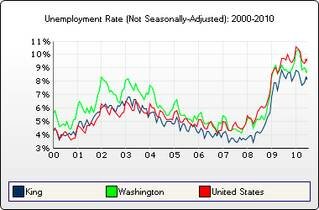 King County's unemployment rate (ESD)
King County's unemployment rate (ESD)
"State jobless rate drops to 8.9% in July" reads the Seattle Times headline. (Et tu, TechFlash?)
We're a metrics nation (even if that whole metric thing never took off), so it's understandable that people follow numbers closely to see what news they contain. But some people seem to want numbers to deliver action-verb news monthly, even when the economy is clearly stagnating.
When Washington's Employment Security Department announces that "Washington's seasonally adjusted unemployment rate fell to 8.9 percent from June’s upwardly revised level of 9.0 percent," it helps to remember that June's rate was originally 8.9 percent. Comparing unrevised numbers then--apples to apples--absolutely nothing happened.
But something did happen, of course. As ESD's July report states right at the outset, "Washington state, on a seasonally adjusted basis, shed 2,300 jobs between June and July 2010." The ESD news release on July's numbers focuses instead on our anemic but actual private-sector job growth.
The private sector added 3,100 jobs in July, led by 1,000 in transportation, warehousing, and utilities. Construction and education and health services grew by 900 jobs over the month.
Almost 240,000 people were anxiously awaiting their UI checks in July, but a growing number have simply reached the end of that rope. ESD's David Wallace tells me, "Since Congress implemented Emergency Unemployment Compensation in July 2008, the State of Washington has had a total of 15,848 claimants that have exhausted benefits."...
Graph: Washington State Employment Security Dept.
There are likely over 100 headlines about Washington's unemployment rate today that are using some variation of "drops" or "falls," and it's making my head hurt. That's not just because the gains are almost entirely due to temporary jobs added by the 2010 Census (all but 200 of the 8,600 jobs added were governmental).It's because it strains the meaning of the word "drop" to use it in describing a 0.2 percent difference, especially with a measure that wasn't designed to offer that kind of real-time accuracy (monthly results, so breathlessly reported initially, are often revised). It's like our headline writers are all devotees of The Secret.
What is true is that, apples to apples, we're measuring the same rate of unemployment as May 2009, says AP. You might think that a year has gone by with no appreciable improvement, but even that's not true: the state has 27,000 fewer jobs, year-over-year (30,000 less in the private sector). That's the difference between a rate and absolute numbers.
(More fun with numbers: the monthly unemployment rate is derived from a survey that counts people who are "actively seeking work." If you don't have a phone, have given up trying to find a job, were desperate enough to take a part-time or contract position, or have gone back to school to retrain, you're not unemployed.)
Signficantly, you don't find the word "falls" in that AP story's quote from Dave Wallace, chief economist at the Employment Security Department:
[Wallace] cautioned that because of the temporary nature of the Census jobs, "it's a mixed or neutral job picture."
He said in all, the private sector only saw a net gain of 200 jobs, which is "pretty much treading water."
Any bets on how many headlines include that phrase, "treading water"? Other than this post's, I mean? And while the unemployment rate can be said to be treading water, the unemployed cannot.
CEO Tay Yoshitani's letter in the Port of Seattle's 2009-10 annual report lays the recession's effects out for you: air travel passengers down 3 percent, shipping container volumes down 7 percent, cruise passengers down 1.2. But the Port also trimmed $16 million from its budget, and has a triple-A rating from Standard & Poor's. Given the extent of the 2009 downturn, you might have expected a lot worse.
By reducing SeaTac's operating costs, the Port was able to reduce what it charges airlines (the cost per emplanement), which gives the airlines the option of charging passengers lower fares, or not going out of business, depending on how things are going. Alaska Airlines and Horizon Air account for 48 percent of the market share at Sea-Tac, with Southwest (9 percent) and United (7) as more distant runners-up. The opening of light rail to the airport gets a tiny sidebar, where it's noted the Port saved $11 million on projected costs.
On the seaport side, to no one's surprise, China remains the top trading partner, with an 8-to1 ratio of import value to export value. That is, Chinese goods worth $16.5 billion arrived, and we sent them just over $2 billion worth. Japan, South Korea, and Taiwan trail at some distance. Singapore and Australia merit the distinction of being net importers. Top five imports are toys and sports equipment, electrical and other machinery, and knit and woven apparel. Top export: the miscellaneous grain, seed, fruit category.
On the cruise side, after adding Carnival to a mix including Holland America, Princess, and Royal Caribbean, Seattle is the sixth cruisiest port in the nation. That said, cruise volume isn't expected to increase: There were 875,000 passengers in 2009, and about 860,000 are estimated for 2010. Still quite a change from 2000, when just 120,000 people set sail....
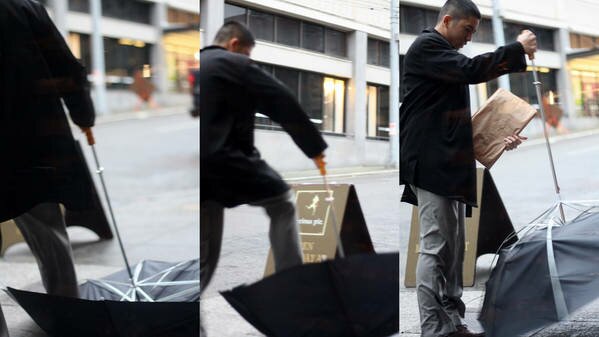 It's all seadevi all day on The SunBreak! Who can take a photo of the wind? seadevi can!
It's all seadevi all day on The SunBreak! Who can take a photo of the wind? seadevi can!
Power outages have already begun (the Rainier Beach outage is already fixed), thanks to high winds. On the eastern side of the state, the National Weather Service warns of dust storms (which can sometimes be big enough to be seen from space--visibility is terrible while you're in one). For the Puget Sound, we've got a wind advisory until about 7 p.m., which means winds from 20-30 mph, with gusts up to 50. Here's Seattle City Light's "When the power goes out" page.
The Seattle Red Cross says stay safe, and be prepared with this list of tips:
Prepare for High Winds
- Move or secure lawn furniture, outdoor decorations or ornaments, trash cans, hanging plants and anything else that can be picked up by wind and become a projectile.
- During the storm, draw blinds and shades over windows. If windows break due to objects blown by the wind, the shades will prevent glass from shattering into your home. ...
"Rainier on Tap" courtesy of troyjmorris
In point of fact, it's estimated that the proposed tax on large brewers would raise about $58 million. Which sounds like real money, but the budget hole is $2.8 billion, so to revise my joke, we're gonna need a bigger beer barrel. (Our consumption is a fairly steady 28 gallons per person each year, says the Beer Institute. Per capita, Oregon and Idaho chug more than we do.)
This is one of the few tax increases that it seems the House and Senate can agree on. The Beer Blog says: "The plan calls for a tax of 50 cents per gallon, which translates to about 43 cents per six-pack. Those numbers apply to the producer and not necessarily to the consumer." But Economics 101 will tell you that taxes on producers tend to make their way to retail prices.
You might think the Washington Brewers Guild would cheer this move, since micro-brewers are exempted (I can't find a final determination on what's a micro-brewery; I've seen estimates of 15,000 to 60,000 barrels per year). But they're coming out against it, on the theory that they'll be next. Sudsy slopes, and all.
Over at Sound Politics, they're gleeful at the Democrats coming out against the Bud-drinkin' working man. Publicola did a quick check to see if higher beer taxes affected consumption significantly, and the initial results would seem reassuring. In terms of price at the tap, if producers decided to pass the whole cost along, it would be about six cents more per pint. Our mythical 28-gallon-per-year Washingtonian would have to ante up an extra $14.
Part of the outrage is due to citizens' death by a thousand tax cuts; no one is really that wild-eyed about $0.50 per gallon except distributors trying to make it on margins. But one thing I've never fully understood about the broad use of sin taxes in fighting a recessionary deficit is, What happens if it works? The idea is to get people to do less "sinning"--but if they actually reform thanks to economic pressure, the government goes broke.
In this case, if people do switch to micro-brews, *poof* goes that $58 million the state so desperately needs. Go ahead, and try it, I guess. But I'm not convinced that this way, deficit-free government lies.
Governor Gregoire today signed bills that will eventually eliminate the use of copper in brakes and the industrial chemical bisphenol A (BPA). Copper undergoes a timed phaseout, so that by 2021, copper can make up no more than five percent of your brakes. The Seattle Times says the ban on BPA in children's containers begins July 1, 2011. Your sports bottle willl be BPA-free as of July 1, 2012.
In both cases, Washington is in the forefront of states taking strong action--we're the first state to ban copper in brakes, reports Sightline, and the Washington Toxics Coalition says we're only the second state to ban BPA.
Sightline explains why the free roadside copper is not such a good deal:
Copper is a problem because it flakes off brakes and winds up on roadways, where stormwater runoff washes it into streams and rivers. Salmon and other aquatic life are harmed by even very low concentrations of copper--and the state estimates that between 70,000 and 320,000 pounds of copper are being washed into Puget Sound each year....
(more)
Despite the PSBJ headline, "Washington unemployment rate rises to 9.3 percent," there's been no substantial change in unemployment. January's unemployment splits the difference between December's estimated percentage (9.5) and revised downward final (9.2).
What's slightly confusing is that the state claims to have added over 12,000 jobs in January. The Tacoma News Tribune says "job gains occurred in retail trade, educational and health services, leisure and hospitality, professional and business services, manufacturing and aerospace and parts manufacturing."
That would be three percent of the approximately 395,000 Washingtonians who are unemployed.
Statements were issued: "This is a positive sign for Washington state," said Gov. Chris Gregoire. "It’s encouraging to see jobs finally coming back," said ESD Commissioner Karen Lee. No one addressed the question of how 12,000 new hires would completely fail to impact unemployment. It's as if the two measurements had been somehow decoupled for the benefit of political press releases.
"I'm on the internet every day. I mean, everyone else is doing it."
Sightline's Eric de Place just posted about the Census Bureau's 2009 numbers on internet use, where the Northwest states make a very strong internet showing. Washington is second among states in percentage of people reporting they log on from somewhere (first: Alaska), and sixth in percentage of people who have internet access at home (first: New Hampshire).Mississippi is the least online state, no matter how you slice it, with just 55 percent logging on.
Now, for my money, you can throw out Alaska as a leader, since the state population is only slightly larger than the city of Seattle. That's apples to oranges!
Sightline is interested in our strong Northwest showing because of the internet's effect on distance. Northwesterners drive more miles because the region is less dense and more roadsy than, say, British Columbia. But trips made on the internet can eliminate a single vehicle's trip entirely (if you watch a movie online, instead of trucking to the video store) or reduce its impact (if your online shopping is delivered).
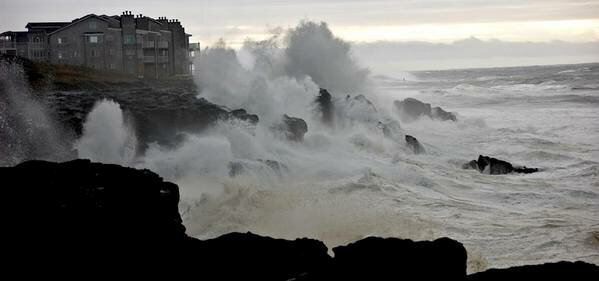 Waves pound a beach and structure between Depot Bay and Boiler Bay on the Oregon Coast. (Photo by Erica Harris, Oregon State University)
Waves pound a beach and structure between Depot Bay and Boiler Bay on the Oregon Coast. (Photo by Erica Harris, Oregon State University)
Twenty years ago, a big winter storm might generate 25-foot waves offshore of the Pacific Northwest. Scientists pegged 33 feet as the maximum in a 100-year storm. But the intervening years--and a strong El Niño weather pattern--brought 33-foot waves...and then some (see photos here). Now researchers at OSU believe that the maximum wave height in a 100-year event is 46 feet (or as much as 55, depending on how you measure).
The largest wave increase, in fact, centers on the Washington coast, down to northern Oregon, says Science Daily. Wave height has grown about four inches per year, for a total of about ten feet over the past three decades.
"Possible causes might be changes in storm tracks, higher winds, more intense winter storms, or other factors," Ruggiero said. "These probably are related to global warming, but could also be involved with periodic climate fluctuations such as the Pacific Decadal Oscillation, and our wave records are sufficiently short that we can't be certain yet. But what is clear is the waves are getting larger."
The change is a boon to storm watchers and shutterbugs, but the mundane result is coastal erosion that occurs two to three times faster than normal. That, in conjunction with the ongoing sea level rise from climate change, argues the NPI Advocate, means real money, as coastal development is damaged and roads wash away....
Visiting family in Portland over the weekend, I got to witness firsthand the difference between how Oregon and Washington are handling their budget crises in the midst of a recession. On Tuesday, Jan. 26, Oregon voters look set to approve ballot Measures 66 and 67, reasonable tax increases on wealthy individuals and businesses, to help fund their budget shortfall and support crucial public services.
Measure 66 raises the state income tax (Oregon has an income tax but no sales tax) 1.8 percent on individuals making over $125,000, and households making over $250,000. The measure also lowers taxes on the unemployed by exempting the first $2,400 of unemployment benefits. Measure 67 raises the minimum business tax for the first time since 1931, from $10 to $150, and adds a 1.3 percent tax on corporate profits over $250,000. The measures are public referendums on bills passed by the legislature last year, and pollsters show both passing....
 Trees at risk: each year, 200,000 trees just like the ones in this grove, go to the blade for junk mail.
Trees at risk: each year, 200,000 trees just like the ones in this grove, go to the blade for junk mail.
When the U.S. Congress passed the National-Do-Not-Call-Registry into law in 2003, and improved it in 2007, it became one of the most popular government programs in our nation's history. Almost overnight, the Registry stopped millions of obnoxious calls from interrupting the average American's dinner or Saturday morning sleep-ins. It wiped out the most intrusive, unwanted, and annoying communications development since Alexander Graham Bell implored Watson to "Come here, I want to see you."
I say nearly, because the DNCR left a few loopholes that continue to annoy us all. Exemptions for non-profit organizations and political calls continue to be allowed. This is a problem, but make no mistake: The Registry has been a stunning success that's allowed many of us the chance to eat our meals in peace.
Now the Seattle City Council has the chance to right a litany of wrongs when they vote on a resolution to petition the state legislature to ban junk mail. The council will vote for the resolution to create a Do-Not-Mail-Registry on January 11.
I could reel off a massive list of environmental reasons it's a good idea. The appropriately, and somewhat humorously-named group ForestEthics sent around a blast email to local media chock full of the "environmental impacts" of the local junk mail trade. For the ultimate guilt trip, consider these factoids:
- Almost 200,000 trees are cut for Seattle's junk mail every year
- Junk mail sent to Seatteites causes global warming gases equal to almost 6,000 cars, due to logging and industrial emissions
- It costs more than $400,000 a year to dispose of Seattle's junk mail.
That cleanup total, by the way, is paid by us through taxes. So every day my wife pulls the junk mail out of the mailbox and throws it into the recycle bin in one deft move, it's costing us money....
Was also the last weekend in which the Huskies won. November 17 and 18, 2007. The Huskies beat Cal 37-23, and the Seahawks beat Chicago 30-23.
Last time the Huskies and Seahawks both won by double-digits: September 8 and 9, 2007. The Huskies beat Boise State 24-10, and the Seahawks beat Tampa Bay 20-6.
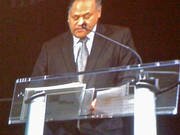
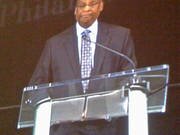
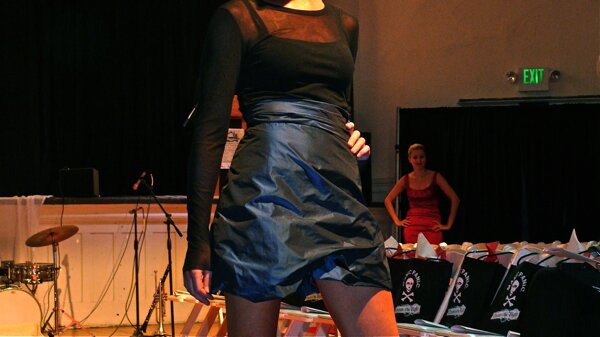
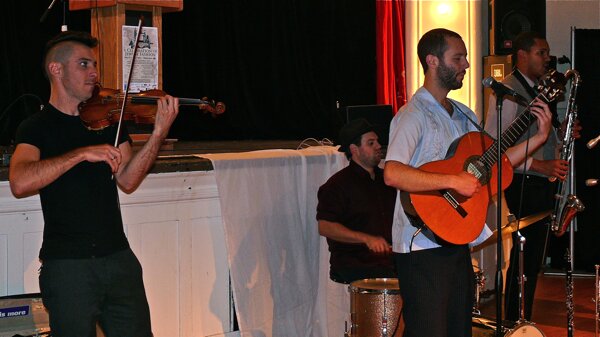



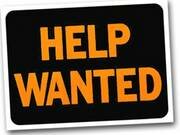

Most Recent Comments